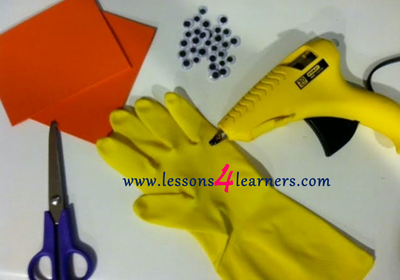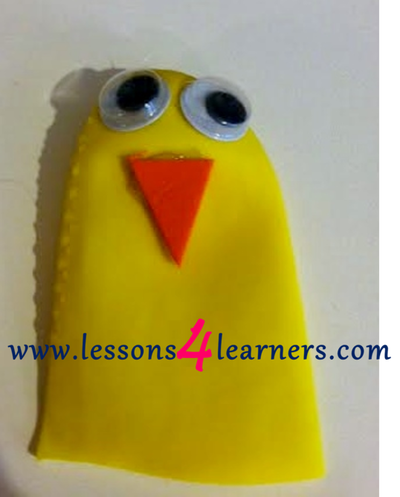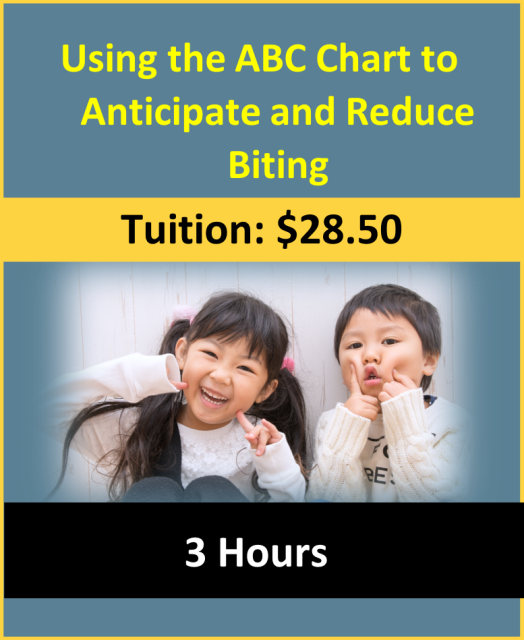Five Little Ducks Finger Play
Lesson Plan:
|
Activity: Five Little Ducks Finger Play Lesson plan developed by Ms. Erika Geelhoed, BA Ed Age Group: Young Infants * Lesson plan objective and assessment can be adapted to use this activity with mobile infants, toddlers or preschoolers. Objectives: Child will:
CDA Competency Standard: II.6.2b
|
|
Click on the photos to enlarge.
|
Materials:
Procedure:
Lesson Prep: To make finger puppets, cut fingers from rubber glove. Glue googely eyes onto puppet. Cut out a small piece of orange foam into the shape of a beak and glue below eyes.
When dry, put on all five duck finger puppets and sing: Five little ducks Went out one day Over the hill and far away Mother duck said "Quack, quack, quack, quack." But only four little ducks came back. Put down a finger and repeat rhyme with one less duck each time. Finish rhyme with: Sad mother duck Went out one day Over the hill and far away The sad mother duck said "Quack, quack, quack." And all of the five little ducks came back” Assessment:
|
Click on the course icon for enrollment information.
The Infant Classroom
Young children thrive on repetition. They love to look at the same books, sing the same songs and play the same games over and over again. Repeating these experiences is critical for infants and toddlers to develop language skills and a sense of security. Introduce new material slowly and balance it with familiar objects.
Environments for infants/toddlers need to be a mix of novel materials and activities for exploration and stimulation as well as familiar and predictable materials and activities for comfort and security. Very young infants, who are not yet mobile, rely on the educator to bring items to them. As infants become mobile, the educator can intentionally place materials nearby to encourage them to move to interact with the materials.
Environments for infants/toddlers need to be a mix of novel materials and activities for exploration and stimulation as well as familiar and predictable materials and activities for comfort and security. Very young infants, who are not yet mobile, rely on the educator to bring items to them. As infants become mobile, the educator can intentionally place materials nearby to encourage them to move to interact with the materials.









